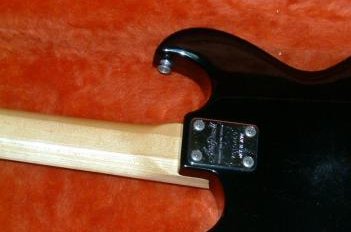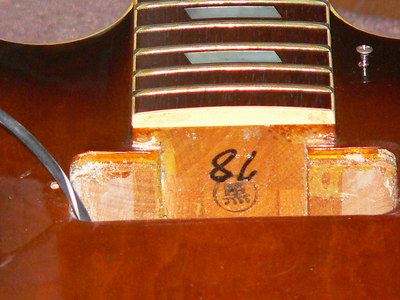I am looking to maybe buy an old (1970's?) Les Paul copy electric guitar.
The person selling it does not know the actual maker.
I've attached 2 photos, so that someone out there may recognize it.
He thinks it was made in Japan.
Thanks in advance!
Views: 1256
- Attachments:
Replies to This Discussion
-
there were several of these guitars with different brand names associated all made in the same factory in Japan. the 3 most common names were: cameo, mann, and lyle. there were different tiers marketed; some of them were made out of plywood and others out of various woods like mahogany with maple caps etc.
-
Blurb from Wikipedia:
Many Matsumoku built guitars, including Epiphone archtops, utilized a 3 piece maple neck with the center section's grain oriented 90 degrees from the side wood. This created a very strong neck not prone to splitting or warping. An often used variation of this is the 5 piece neck with two thin trim strips of walnut or ebony separating the 3 sections. Matsumoku made many neck-through-body solid body electric guitars and basses, most with 5 piece necks.
Matsumoku often utilized the Nisshin Onpa company, who own the Maxon Effects brand as a subcontractor for its pickups. Some Maxon pickups have Maxon's "M" logo stamped on the back.
The name Matsumoku appeared on the neck bolt plate of some guitars they built. Early Grecos and some 1980s Aria Pro IIs have Matsumoku on the neck bolt plate. Other neck plates were blank or simply had the word "Japan" stamped on them.
Many Matsumoku set neck guitars and basses have the inspector's hon (name stamp) stamped inside the neck pick-up cavity.
-
Casey,
THANKS for that info. It's good info to have, especially since I never heard of 2 of those "brands"..
Arthur,
I agree with Casey that this guitar has a Matsumoku heritage.
The bridge, in particular, is the type/style used on higher en Aria Pro II instruments (which I consider to be extremely well crafted instruments).
Is it a set neck or bolt-on? A few more photos would be interesting.
Last year, we had a bunch of used "Matso" born instruments come across the bench. Some were real duds (especially the plywood bodied guitars Casey mentioned). Some, on the other hand, were nicely crafted and well engineered instruments. I was presently surprised with some of the instruments as their quality was better than their USA counterparts of the same era.They set-up and sounded great.
I'd estimate the guitar to have been built between 1974 and 1978. This particular instrument, via lack of a brand-name, was likely sold in the Japanese domestic market.
If you're considering purchasing the guitar (for under $100), you could do a lot worse.
Hope some of this helped, my friend :)
© 2025 Created by Frank Ford.
Powered by
![]()

